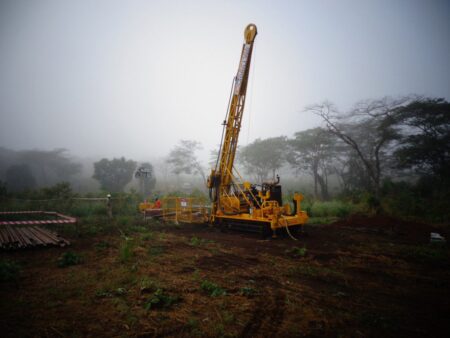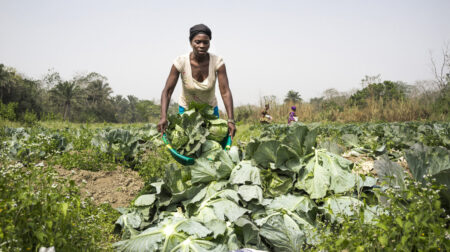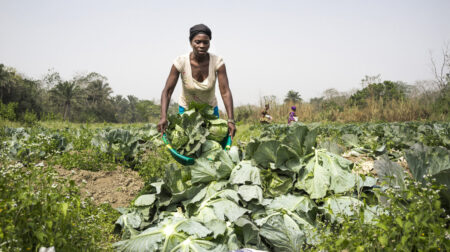For over 20 years, Acacia and its forerunner mining companies including African Barrick Gold, Barrick Gold, Placer Dome, Pangea Minerals and Afrika Mashariki have been operating in Tanzania in three gold mines, Bulyanhulu, Buzwagi and North Mara, found in the north-west region of Tanzania.
Acacia-Tanzania’s largest gold producer was recently cleared by the Magufuli government and resumed its metal concentrates exportation after a series of regulations led by The Mining Commission of Tanzania Ministry of Minerals that impeded the export of the mineral.
In a press release published by Acacia on 15th August, export permits are now received by Acacia that noted to have missed 30 percent of sales since the ban went live.
Despite the latter, Acacia and Tanzania could mutually benefit form the mining industry which has grown by 10 percent in the first quarter, according to Tanzania’s National Bureau of Statistics (NBS) 2019 first quarter highlights.
Also Read:Tanzania Braces for $300 Million in royalties from Acacia mining
Revamping its Stake in the Tanzania’s Mining Industry
As the largest investor and employer in Tanzania’s mining industry, Acacia indicated a 50 percent impact on the production gold and copper concentrate throughout the export ban. With the ban lifted, Acacia could experience a rebound in the mining arena.
Government authorities report the growth of the mining industry to be 10 percent from negative growth 5.7 percent in the first quarter of 2018, due to the production increase in gold, copper and diamonds. Available data indicate, gold production rose to 8,656.16 kg in the first quarter of 2019 from 8,654.97 kg in the same quarter of 2018.
According to available data, Tanzania stands at number as the fourth largest gold producer in Africa after Ghana, with values estimated at USD 960 million. In 2018, overall Acacia gold receipts to the Tanzanian government totaled approximately USD 662 million paid as economic benefits, while USD 411 million was introduced directly into the country’s economy via suppliers, employees and taxes.
In light of President, Hon. John Joseph Pombe Magufuli’s ambition to straighten Tanzania’s dealings with international investors, the latter could be a suitable ground to revamp professional operating procedures with the government via its respective ministry.
Acacia has much to offer to the economy both through taxes and of course employment of thousands of Tanzanians. Around 36,200, direct and indirect jobs rely on Acacia, along side other education, health and infrastructure, investment projects that Acacia foresees to implement as part of Acacia’s culture.
Compared to Anglo Gold Ashanti, which has less than 4,567 local employees and slightly less million taxes (USD 1.1 billion versus USD 1.3 billion-paid by Acacia) contributed to the government, Acacia stands regain the lost mining glory and establish its ground before the buyout with Barrick Gold.
Acacia’s Stock Market Value
According to a July 19th,2019, news article published by Bloomberg, Acacia shares took a 20 percent rise, soon after the buy-out deal was announced involving, the Canadian gold miner Barrick Gold Corp, the second largest gold producer in the world.
Barrick Gold Corp took a stand to settle the controversial dispute which halved Acacia’s cash position over three mines in the mineral endowed country.
Further, after the exports ban was lifted by the Tanzania government in early August 2019, it’s shares have sustained a promising rise.

With the new developments occurring in Acacia, there is a good chance for Acacia to return its profitable share values to the top. Under the careful management of the world’s second largest gold producer (Barrick Gold),profitable prospects may arise.

For Acacia’s competitor or rather Barrick’s new competition, Anglo Gold Ashanti, stand to face a constructive competition from Acacia, whose contribution to the Tanzanian mining industry seem to impact the local economy.
In all three operated mines by Acacia; Bulyanhulu, Buzwagi and North Mara, due to the rock formation they produce gold and silver bars and concentrates containing gold, silver and copper, of which its sales account 50 percent of Bulyanhulu and Buzwagi as well as 30 percent of the group revenues.
Despite of export ban limiting revenue generation in Bulyanhulu Gold Mine and halving Acacia’s cash flow. Tanzania is at a position to yield its tax claims, accumulate a 50/50 revenue sharing and revitalize its mining industry. As Barrick Gold Corp commits to settle the dispute, who knows how things will turn for Acacia’s Mining under Barrick Gold stakeholders and Tanzanian economy at large.
Also Read:Acacia Mining holds its ground even after Magufuli and Barrick Gold truce










